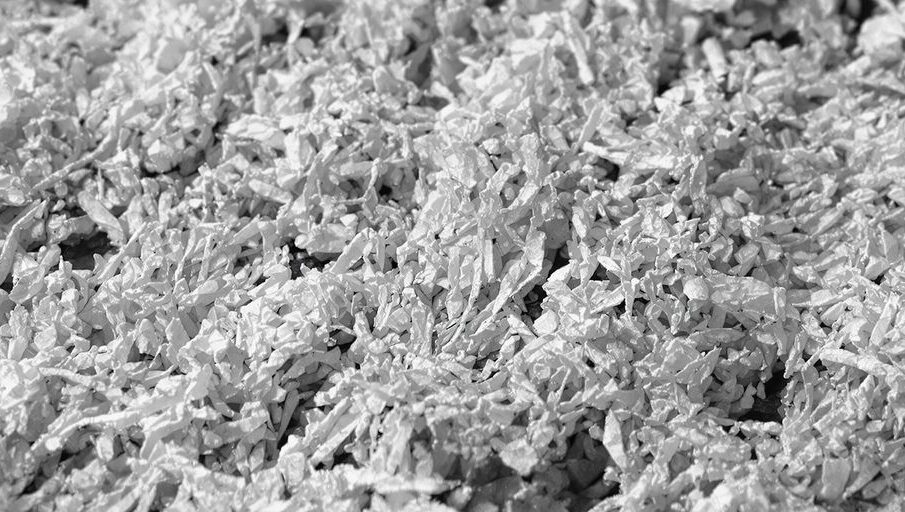Composition of Cement Asbestos

Key Components of Cement Asbestos
Cement asbestos is a material made by combining cement with asbestos fibers. The cement, typically a mix of lime, silica, and alumina, forms the base structure. Asbestos fibers, known for their durability and resistance to heat, are added to provide reinforcement. This combination creates a robust material that resists cracking and wear over time.
The asbestos component, chemically a hydrous magnesium silicate with the formula Mg3Si2O5(OH)4, contributes to the material’s unique properties. For more on the chemical structure of asbestos, see asbestos is a hydrous magnesium silicate. The cement matrix, on the other hand, often contains mineral phases like calcium carbonate (CaCO3) and calcium hydroxide (Ca(OH)2), which enhance its binding capacity. A detailed chemical analysis of asbestos cement reveals how these elements interact.
Role of Asbestos in Cement Mixtures
Asbestos plays a key role in strengthening cement mixtures. Its fibrous structure acts like a mesh, holding the cement particles together and reducing the risk of fractures. This reinforcement also improves the material’s resistance to high temperatures and weathering. Historically, this made asbestos-cement products ideal for construction materials like pipes, roofing, and siding.
Chemical Properties of Cement Asbestos
The chemical properties of cement asbestos are rooted in its dual composition. Asbestos fibers are chemically inert, meaning they resist reactions with other substances, while the cement matrix provides alkaline stability. Together, these properties make cement asbestos resistant to chemical degradation, even in harsh environments. However, the material’s durability comes with health and environmental concerns, particularly when asbestos fibers are released into the air.
Historical Use of Asbestos in Cement Products
Origins of Asbestos-Cement Materials
Asbestos has been incorporated into construction materials for over a century. Its unique properties, such as heat resistance and durability, made it an ideal additive to cement. By mixing asbestos fibers with cement, manufacturers created a material that was stronger and more versatile than traditional cement. This innovation allowed for the production of asbestos-cement products that were widely used in construction and industrial settings. The addition of asbestos significantly improved the performance of cement products, making them a popular choice for decades.
Industrial Applications Over Time
During the 20th century, asbestos-cement products became a cornerstone of industrial and residential construction. These materials were used in a variety of applications, including roofing, siding, and water pipes. Companies like Johns-Manville played a pivotal role in expanding the range of asbestos-cement products, contributing to their widespread use. Builders favored these materials for their affordability and resistance to wear, heat, and corrosion. However, the extensive use of asbestos also led to increased exposure risks for workers and the public.
Regulatory Changes and Their Impact
As the health risks associated with asbestos exposure became evident, regulations began to change. In the latter half of the 20th century, governments worldwide imposed restrictions on asbestos use, leading to a decline in asbestos-cement production. The shift was driven by growing awareness of diseases linked to asbestos, such as mesothelioma and asbestosis. Despite these changes, asbestos remains present in older structures, posing ongoing challenges for remediation and disposal. Understanding the historical context of asbestos use is essential for addressing these issues effectively.
The Relationship Between Asbestos and Cement Durability
How Asbestos Enhances Cement Strength
Asbestos has long been recognized for its unique properties when mixed with cement. The fibers, being naturally strong and flexible, interlock within the cement matrix. This creates a reinforced structure that resists cracking and breaking under stress. By adding asbestos, cement gains a level of tensile strength that other materials struggle to achieve. This was particularly valuable in construction projects requiring materials that could withstand heavy loads or extreme conditions.
Longevity of Asbestos-Cement Structures
Structures made with asbestos-cement often outlasted their non-asbestos counterparts. The fibrous nature of asbestos helped prevent the shrinkage and expansion issues that commonly weaken other cement products over time. This made it a preferred choice for applications like roofing and piping, where durability was key. However, while the physical longevity of these materials is undeniable, concerns about health risks have overshadowed their benefits.
Comparing Durability with Non-Asbestos Alternatives
Modern non-asbestos materials have come a long way, but they still face challenges in replicating the durability asbestos once provided. While alternatives like fiber-reinforced polymers or cellulose fibers are safer, they may not always match the same lifespan or structural integrity. The trade-off between safety and performance remains a critical consideration in construction industries today.
Health Risks Associated with Asbestos in Cement
Inhalation Hazards of Asbestos Fibers
When asbestos fibers become airborne, they pose a significant threat to human health. Breathing in these tiny fibers can lead to severe respiratory diseases. Once inhaled, the fibers can become lodged in the lungs, causing inflammation and tissue damage over time. This risk is particularly high during activities like cutting, drilling, or demolishing asbestos-cement products, which release the fibers into the air. Workers and even nearby residents may unknowingly be exposed to this invisible danger.
Long-Term Health Implications
Asbestos exposure doesn’t show immediate symptoms but can lead to devastating health issues years later. Conditions such as asbestosis, lung cancer, and mesothelioma are directly linked to prolonged exposure. Among these, mesothelioma is one of the most aggressive and fatal diseases, with no known cure. Even minimal exposure can cause serious health problems, making it essential to limit contact with asbestos-containing materials.
Safety Measures for Handling Asbestos-Cement
To reduce risks, strict safety protocols should be followed when handling asbestos-cement products. Here are some key guidelines:
- Always wear protective gear, including respirators and gloves.
- Wet the material to minimize fiber release during cutting or removal.
- Avoid breaking or crushing asbestos-containing products.
- Dispose of asbestos waste in sealed, labeled containers, following local regulations.
These precautions are not just for workers but also for anyone in the vicinity of such activities. Proper awareness and adherence to safety measures can significantly lower the health risks associated with asbestos in cement.
Environmental Impact of Asbestos-Cement Materials
Challenges in Disposal and Recycling
Managing asbestos-cement waste is no small task. When asbestos-containing materials are disposed of improperly, they can release harmful fibers into the air, posing health risks to nearby communities. Recycling such materials is equally problematic, as breaking them down often disturbs the asbestos, making the process hazardous. Proper disposal methods are critical to minimize environmental and health risks.
Key considerations include:
- Sealing asbestos-cement waste in airtight containers before disposal.
- Transporting waste to approved hazardous material facilities.
- Avoiding any mechanical processes that might release fibers during recycling attempts.
Impact on Soil and Water Quality
Asbestos fibers can leach into soil and water systems, especially when asbestos-cement products deteriorate over time. This contamination is particularly concerning in areas close to landfills or where improper disposal has occurred. Asbestos contamination in drinking waterposes significant health risks, especially in communities relying on affected water supplies.
To mitigate these effects:
- Monitor water sources near known asbestos disposal sites.
- Implement barriers to prevent fibers from spreading through soil.
- Regularly test soil and water for contamination levels.
Global Efforts to Mitigate Environmental Risks
Around the world, countries are working to address the environmental challenges posed by asbestos-cement materials. Some have banned asbestos entirely, while others focus on strict regulations for handling and disposal. For individuals, living in a building with asbestos raises awareness about the broader environmental impact and the importance of safe practices.
Efforts include:
- Enforcing international treaties to limit asbestos use.
- Funding research into safer disposal and recycling methods.
- Educating the public on the risks of asbestos exposure and contamination.
Modern Alternatives to Asbestos in Cement
Innovative Fiber-Reinforced Materials
In recent years, there has been a shift toward using safer, fiber-reinforced materials instead of asbestos in cement. These materials often include cellulose fibers, glass fibers, and synthetic options like polypropylene. Cellulose fiber, in particular, has gained attention for its natural origins and compatibility with cement mixtures. These fibers not only offer strength and durability but are also environmentally friendly. Homeowners interested in safer construction materials might explore cellulose fiber as an alternative to asbestos-containing cement products.
Comparative Analysis of New and Old Materials
When comparing modern alternatives to traditional asbestos-cement, several factors come into play. New materials are generally safer for human health and less harmful to the environment. However, they can sometimes be costlier or require different handling methods. For instance:
- Cellulose fiber-reinforced cement is lightweight and eco-friendly but may not match the thermal resistance of asbestos.
- Polyurethane foam provides excellent insulation but is less durable in structural applications.
- Amorphous silica fabrics are strong and heat-resistant, though they are more expensive to produce.
Each option has its pros and cons, making it essential to weigh the specific needs of a project.
Adoption of Safer Alternatives in Construction
The construction industry has gradually embraced these modern alternatives, driven by stricter regulations and growing awareness of asbestos-related health risks. Builders now prioritize materials that meet safety standards while maintaining performance. For example, cellulose fibers are increasingly used in roofing and siding, while polyurethane foam is favored for insulation purposes. This shift not only improves safety but also aligns with global efforts to reduce environmental impact. As more people recognize the benefits of these materials, their adoption is expected to grow steadily.
Testing and Identifying Asbestos in Cement
Laboratory Methods for Detection
Identifying asbestos in cement requires precise laboratory techniques. Microscopic analysis is essential for identifying asbestos fibers in materials. Common methods include Polarized Light Microscopy (PLM) and Transmission Electron Microscopy (TEM). These approaches allow for a detailed examination of the material’s structure, helping to confirm the presence of asbestos. Analysts often use PLM to distinguish asbestos types based on their optical properties, while TEM provides a more in-depth view, capturing the size and shape of the fibers. These methods are reliable but require specialized equipment and trained professionals.
Field Techniques for Identification
While laboratory methods offer accuracy, field techniques are often the first step in identifying asbestos in cement. Inspectors may look for visual cues like the texture and age of the material. Cement containing asbestos often has a fibrous appearance, and older structures are more likely to include it. Portable tools, such as handheld X-ray fluorescence (XRF) devices, can also provide preliminary results. However, these methods are not foolproof and should always be followed up with laboratory testing for confirmation.
Importance of Professional Assessment
Testing for asbestos is not something to tackle alone. Professional assessment ensures both accuracy and safety. Certified inspectors follow strict protocols to collect samples without releasing harmful fibers into the air. They also interpret results with expertise, providing clear guidance on next steps. Whether it’s a home renovation or demolition project, involving professionals minimizes risks and ensures compliance with regulations.
Legal and Ethical Considerations in Asbestos-Cement Use
Compliance with International Regulations
Governments worldwide have implemented strict laws to regulate the use of asbestos in construction materials, including cement. These regulations often aim to minimize health risks associated with asbestos exposure. Adhering to these laws is not just a legal requirement but also a moral responsibility for organizations and individuals involved in construction. Non-compliance can lead to severe penalties, including fines and legal action. Builders and manufacturers must stay updated on the evolving legal landscape to ensure their practices align with current standards.
Ethical Concerns in Developing Nations
While many developed countries have banned or restricted asbestos use, some developing nations still rely on asbestos-cement products due to their affordability. This raises ethical concerns about prioritizing cost over safety. Companies exporting asbestos materials to these regions often face criticism for exploiting lenient regulations and endangering public health. Balancing economic needs with ethical responsibilities remains a challenge, particularly in areas with limited access to safer alternatives.
Litigation Cases and Precedents
Legal battles over asbestos exposure have shaped public awareness and corporate accountability. High-profile cases have highlighted the devastating health impacts of asbestos, leading to significant financial settlements and stricter regulations. These lawsuits often revolve around negligence, such as failing to disclose asbestos presence in properties. For instance, sellers must disclose the presence of asbestos in homes to protect buyers and avoid legal repercussions. Additionally, not conducting proper testing before renovations or demolitions can lead to severe consequences, as testing for asbestos is essential to ensure safety. These precedents emphasize the importance of transparency and proactive measures in asbestos-related industries.
The Role of Asbestos in Cement Insulation Properties
Thermal Insulation Benefits of Asbestos
Asbestos was widely used in cement products for its exceptional thermal insulation properties. Its natural resistance to heat made it an ideal choice for applications where maintaining temperature control was critical. These properties were particularly beneficial in industrial settings, where equipment and structures needed to withstand high temperatures. This unique characteristic allowed asbestos-cement products to provide effective insulation without compromising structural integrity.
Fire Resistance in Asbestos-Cement Products
Another significant advantage of asbestos in cement was its fire-resistant nature. Cement reinforced with asbestos fibers could endure extreme heat without igniting, making it a preferred material for fireproofing. This fire resistance was especially valuable in building construction, where safety was a priority. Common uses included roofing, siding, and even fire doors, all designed to minimize fire-related risks.
Limitations of Insulation Performance
While asbestos-cement materials offered strong insulation and fireproofing benefits, they were not without limitations. Over time, wear and tear could expose asbestos fibers, posing health risks if inhaled. Additionally, advancements in modern materials have shown that alternatives can match or exceed the insulation performance of asbestos-cement, without the associated health hazards. Today, managing existing asbestos safely remains critical to prevent exposure risks in older structures, highlighting the need for ongoing awareness and proper handling practices.
Structural Applications of Asbestos-Cement Materials
Use in Roofing and Siding
Asbestos-cement was widely used in roofing and siding applications, primarily because of its durability and resistance to environmental factors. Its ability to withstand extreme weather conditions made it a popular choice for decades. Roofs and siding made from asbestos-cement provided a cost-effective solution for both residential and industrial buildings. The material’s lightweight nature also made it easier to install compared to traditional options. However, concerns about asbestos fibers have led to its decline in modern construction practices.
Applications in Water and Sewer Pipes
Another significant use of asbestos-cement was in the production of water and sewer pipes. These pipes were favored for their strength and resistance to corrosion, which made them ideal for long-term infrastructure projects. The material’s smooth inner surface also helped in reducing friction, improving water flow efficiency. Unfortunately, the potential presence of legacy asbestos-containing materials in such products has raised safety and health concerns over time. Proper handling and disposal of these pipes remain critical to mitigate risks.
Architectural Innovations with Asbestos-Cement
In addition to its practical uses, asbestos-cement found its way into architectural innovations. Designers and builders appreciated its versatility, using it to create decorative panels, intricate facades, and other structural elements. Its fire-resistant properties added another layer of appeal, especially in urban settings where fire safety was a priority. While asbestos-cement allowed for creative architectural solutions, its health implications have overshadowed its benefits, leading to a shift toward safer alternatives in recent years.
Economic Implications of Asbestos in Cement Production
Cost Benefits of Using Asbestos Historically
In the early days of asbestos-cement production, the material was widely regarded as a cost-effective solution. Asbestos was abundant, affordable, and easy to integrate into cement mixtures. Manufacturers could produce durable and versatile building materials at a fraction of the cost of other alternatives. This affordability played a key role in the rapid adoption of asbestos-cement products worldwide.
Key cost benefits included:
- Lower raw material expenses due to the widespread availability of asbestos.
- Reduced production costs, as asbestos enhanced the efficiency of cement manufacturing processes.
- Longer-lasting products, which minimized the need for frequent replacements and repairs.
Economic Challenges of Phasing Out Asbestos
The decision to phase out asbestos brought significant economic challenges. Transitioning to asbestos-free materials required substantial investment in research, development, and manufacturing upgrades. Many companies faced financial strain as they adapted to new regulatory standards and sought alternative materials.
Some of the economic hurdles included:
- High costs associated with retrofitting factories to accommodate non-asbestos production.
- Increased expenses for sourcing and testing safer alternatives.
- Loss of market share during the transition period, as competitors adapted more quickly.
Market Trends in Asbestos-Free Cement
As the asbestos market evolves, there has been a noticeable shift toward asbestos-free cement products. This transition is driven by stricter regulations, growing consumer awareness, and advancements in material science. The asbestos market, however, remains significant, with projections indicating an increase from $1.15 billion in 2024 to $1.27 billion in 2025, reflecting a robust compound annual growth rate (asbestos market growth).
Current market trends include:
- Increased investment in innovative fiber-reinforced materials.
- Growing demand for eco-friendly and sustainable construction products.
- Expansion of asbestos-free cement production in regions with strict regulatory frameworks.
While the economic implications of asbestos in cement production are complex, the shift toward safer and more sustainable alternatives marks a positive step for the industry.
Future Perspectives on Asbestos-Cement Research
Advancements in Material Science
Research into asbestos-cement alternatives has picked up pace in recent years. Scientists are exploring innovative materials that can replicate the durability and strength of asbestos-cement without its health risks. One promising area is the use of nanomaterials, which offer high performance and safety. For example, carbon nanotubes and other advanced fibers are being tested for their potential to replace asbestos in construction materials. These substitutes aim to not only match the mechanical properties of asbestos but also improve environmental sustainability.
Potential for Safe Asbestos Alternatives
The search for safer alternatives has led to significant breakthroughs. Materials like polypropylene fibers and cellulose have shown promise in mimicking the properties of asbestos in cement. Researchers are also investigating hybrid composites that combine natural and synthetic fibers to achieve optimal performance. Some of these alternatives are already being adopted in niche markets, but widespread use will depend on further testing and cost reductions.
Global Trends in Asbestos Regulation
International regulations are playing a key role in shaping the future of asbestos-cement research. Countries with strict bans on asbestos are driving innovation, while those with more lenient laws are slowly catching up. The global push for greener construction practices is also influencing the development of asbestos-free materials. As awareness grows, industries are likely to face increased pressure to transition to safer and more sustainable options.
Legal Resources
Robert King Mesothelioma Law Services











